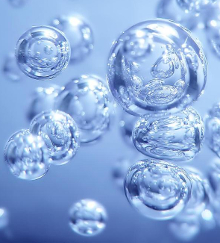Light way to split H20 could yield super-fuel
 Researchers are working on a way to split water into hydrogen and oxygen using some special nanoparticles and light.
Researchers are working on a way to split water into hydrogen and oxygen using some special nanoparticles and light.
Engineers on a joint team from the US and China have created a new catalyst that can quickly generate hydrogen from water using sunlight and the structure of cobalt oxide nanoparticles.
With several car-makers bringing out hydrogen-fuelled vehicles in the next year or two, there is a great need to develop a new way to generate the constituents to power them.
The new photocatalyst demonstrates the potential of nanotechnology in engineering material properties, but researchers say there is plenty more work to be done.
Jiming Bao, lead author of an upcoming paper on the technique, says photocatalytic water-splitting experiments have been tried for decades, but this is the first to use cobalt oxide. It is also the first to use neutral water under visible light at a high energy conversion efficiency without co-catalysts or sacrificial chemicals.
In experimental scenarios researchers prepared nanoparticles in two ways - using femtosecond laser ablation and mechanical ball milling.
A range of light sources were used from a laser to white light, in order to simulate the solar spectrum. Bao said he would expect the reaction to work equally well using natural sunlight.
With nanoparticles in place and light applied, the water separated into hydrogen and oxygen almost immediately. The resulting reaction produced twice as much hydrogen as oxygen, as is expected from the 2:1 hydrogen to oxygen ratio in H2O.
The experiment has potential as a source of renewable fuel, but at a solar-to-hydrogen efficiency rate of around 5 percent, the conversion rate is still too low to be commercially viable.
Researchers suggested a more feasible efficiency rate would be closer to 10 per cent, and may be made possible by reducing costs and extending the lifespan of cobalt oxide nanoparticles.
Investigations will continue.








 Print
Print